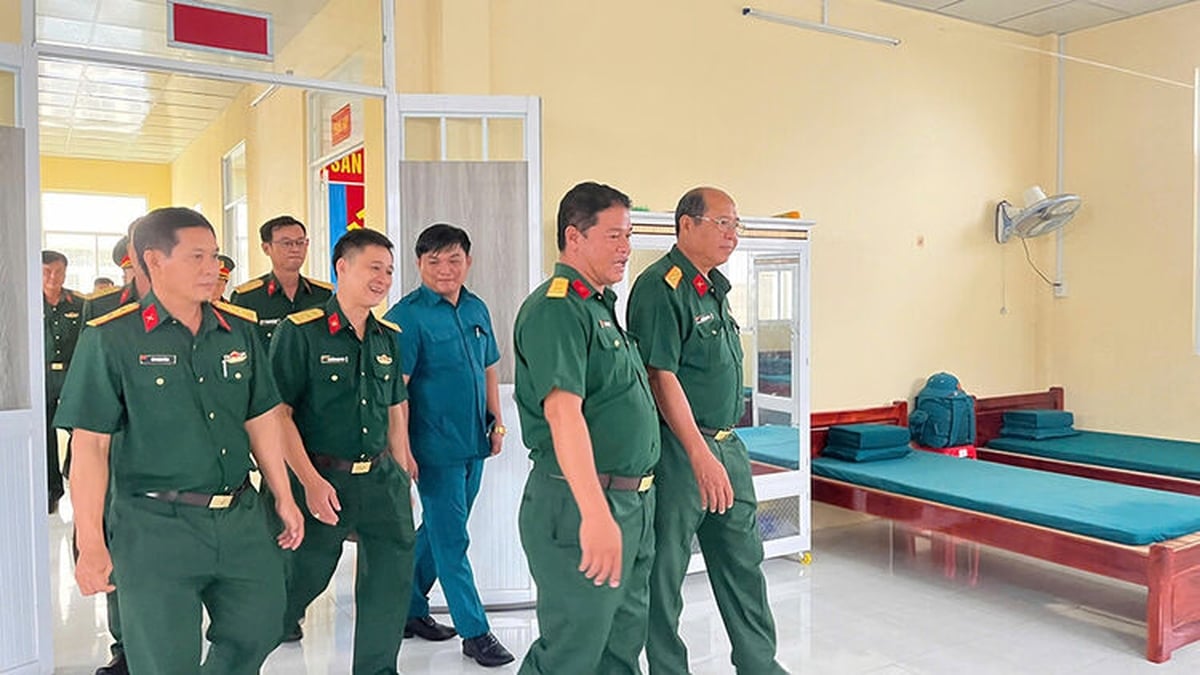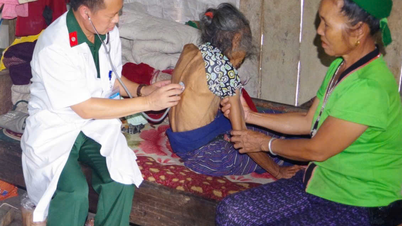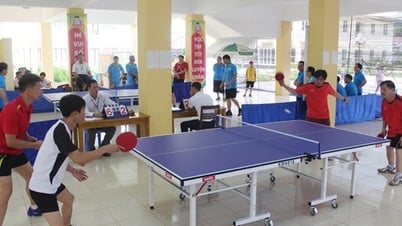
Candidates take the 2024 High School Graduation Exam at Le Hong Phong High School (District 5, Ho Chi Minh City). Illustration photo: INT
And from this exam, the Ministry of Education and Training will compare the average scores of 9 subjects and the average scores of each subject among localities nationwide. This is a solution to increase transparency and improve quality and is a normal activity, agreed upon by society.
3 localities have average exam scores above 7.0 points
There are two different types of comparison methods: horizontal comparison and vertical comparison. Horizontal comparison is comparing a certain index between units at a time. For example, comparing the average test scores between localities in the high school graduation exam in one year is horizontal comparison. Vertical comparison is comparing within a unit, but at different times. For example, comparing the average test score ranking of a locality over 5 years is vertical comparison.
Based on the average exam scores in 5 years (2020 - 2024), we calculate the average exam scores of each locality over the past 5 years, then arrange them from largest to smallest. If the average exam scores are equal, the locality with the better ranking in 2024 will be ranked first. In particular, Dak Lak, Quang Nam and Da Nang, in 2020 due to Covid-19, these three provinces and cities had many students taking the graduation exam for the second time, so they were not ranked.
With the above calculation and arrangement, 63 localities nationwide are divided into 4 groups: Group 1, including 3 localities with an average score of 5 years above 7.0; group 2, including 19 localities with an average score from 6.5 to below 7.0; group 3, having an average score from 6.2 to below 6.5; group 4, including 14 localities with an average score below 6.2. Note that this grouping is only relative.
Of which, Binh Duong (average score 7.079 - ranked 1st), Nam Dinh (7.066 - 2), Vinh Phuc (7.014 - 3), are the three localities leading the country in average exam scores over the past 5 years.

19 localities have an average score from 6.5 to below 7.0
There are 19 localities with good quality of mass education through 5 high school graduation exams, namely Ninh Binh (score 6,983 - ranked 4th), Ha Nam (6,815 - 5), Hai Phong (6,810 - 6), An Giang (6,792 - 7), Phu Tho (6,739 - 8), Bac Ninh (6,732 - 9); Ha Tinh (6,695 - 10), Ho Chi Minh City (6,682 - 11), Thai Binh (6,681 - 12), Bac Lieu (6,664 - 13), Vinh Long (6,650 - 14), Tien Giang (6,637 - 15), Hai Duong (6,629 - 16); Lam Dong (6,599 – 17), Can Tho (6,575 – 18), Hanoi (6,536 – 19), Ba Ria – Vung Tau (6,523 – 20), Dong Thap (6,504 – 21) and Bac Giang (6,503 – 22).

27 localities have an average score from 6.2 to below 6.5
There are 27 localities with an average score from 6.2 to below 6.5, including: Ben Tre (6.478 - 23), Long An (6.476 - 24), Binh Dinh (6.465 - 25), Nghe An (6.462 - 26), Tuyen Quang (6.461 - 27), Lao Cai (6.458 - 28), Binh Thuan (6.454 - 29), Thua Thien Hue (6.430 - 30), Thanh Hoa (6.418 - 31), Tay Ninh (6.380 - 32), Hung Yen (6.333 - 33), Bac Kan (6.324 - 34), Da Nang (6.321 - 35), Binh Phuoc (6.3205 - 36), Quang Ninh (6.306 - 37), Dong Nai (6.293 - 38), Kon Tum (6.293 - 38). (6,285 – 39), Quang Binh (6,283 – 40), Ca Mau (6,276 – 41), Kien Giang (6,273 – 42), Quang Nam (6,264 – 43), Khanh Hoa (6,256 – 44), Thai Nguyen (6,251 – 45), Soc Trang (6,234 – 46), Yen Bai (6,228 – 47), Quang Ngai (6,210 – 48), Gia Lai (6,206 – 49).

14 localities have an average score below 6.2
There are 14 localities with an average 5-year score below 6.2 points, including: Hau Giang (6.183 – 50), Quang Tri (6.160 – 51), Tra Vinh (6.150 – 52), Lang Son (6.149 – 53), Phu Yen (6.119 – 54), Hoa Binh (6.112 – 55), Ninh Thuan (6.079 – 56), Lai Chau (6.075 – 57), Dien Bien (6.071 – 58), Dak Lak (6.033 – 59), Dak Nong (6.012 – 60), Son La (6.010 – 61), Cao Bang (5.959 – 62) and Ha Giang (5.550 – 63).

Many localities increased and decreased in rank compared to 2020
Through a 5-year comparison, 27 localities in 2024 increased their rank compared to 2020, 2 localities maintained their rank and 34 localities dropped their rank. Of which, 15 localities improved their rankings very well over the years, typically: Tuyen Quang (2020: 50, 2021: 31, 2022: 18, 2023: 21, 2024: 14), Nghe An (38 - 34 - 23 - 22 - 12), Bac Ninh (26 - 19 - 6 - 5 - 5), Bac Giang (49 - 22 - 11 - 16 - 19), Hoa Binh (58 - 62 - 33 - 41 - 36), Phu Tho (15 - 10 - 8 - 8 - 8), Ha Tinh (24 - 18 - 9 - 10 - 6), Vinh Phuc (9 - 5 - 2 - 1 - 1)...

On the contrary, there are some localities that have decreased in rank over the years such as: Bac Kan (23 – 33 – 39 – 44 – 48), Bac Lieu (8 – 7 – 14 – 17 – 18), Dong Thap (14 – 23 – 26 – 29 – 29), Binh Thuan (19 – 21 – 32 – 31 – 33), Ca Mau (31 – 37 – 45 – 42 – 50), Tay Ninh (20 – 26 – 36 – 34 – 42), Quang Tri (41 – 55 – 52 – 51 – 56), Bac Kan (23 – 33 – 39 – 44 – 48).

Solutions to improve education quality after comparison
Through the practice of comparing the results of the high school graduation exam in the past 5 years, it has been shown that comparison is a new and diverse approach when applied to the field of education. Comparing the average exam scores between localities aims to compare and contrast the quality of education of each locality with the goals of general education.
Compare the total scores of 3 subjects: Math, Literature, Foreign Language, which are 3 compulsory subjects, to know the quality of core education and compare the university admission rate - admission rate by locality to know the level of post-high school streaming of each locality. Compare the difference between the transcript and the exam score to know whether the testing and evaluation of students is substantial and consistent with the quality of students or not.
In fact, over the past five years, many localities have taken steps to improve their rankings. Therefore, benchmarking also creates motivation to improve the quality of education.
The core and practical benefits of benchmarking are reflected in two main issues: identifying the success factors of other localities; and clearly and fully understanding one's own limitations in order to continuously improve and build a culture of quality.
Based on the comparison of the average exam scores of each locality over 5 years (2020 - 2024), localities need to review, evaluate, and diagnose the reasons why their units have been successful or have not met requirements for many years. It is necessary to analyze many aspects, from career guidance and streaming after junior high school, admission to grade 10 high school, to innovation in teaching and learning, testing, student assessment, the rate of students registering for the Social Science or Natural Science group, the quality of the teaching staff, etc.
From there, we will understand more deeply and clearly the current state of education quality in our locality. When we fully and clearly understand the locality and each school, we will have better solutions to improve quality. At the same time, localities need to learn from the success of localities with similar socio-economic conditions.





































































































Comment (0)